Abstract
Two rough-toothed porpoises (Steno bredanensis) were individually trained to emit novel responses, which were not developed by shaping and which were not previously known to occur in the species, by reinforcing a different response to the same set of stimuli in each of a series of training sessions. A technique was developed for transcribing a complex series of behaviors on to a single cumulative record so that the training sessions of the second animal could be fully recorded. Cumulative records are presented for a session in which the criterion that only novel behaviors would be reinforced was abruptly met with four new types of responses, and for typical preceding and subsequent sessions. Some analogous techniques in the training of pigeons, horses, and humans are discussed.
Full text
PDF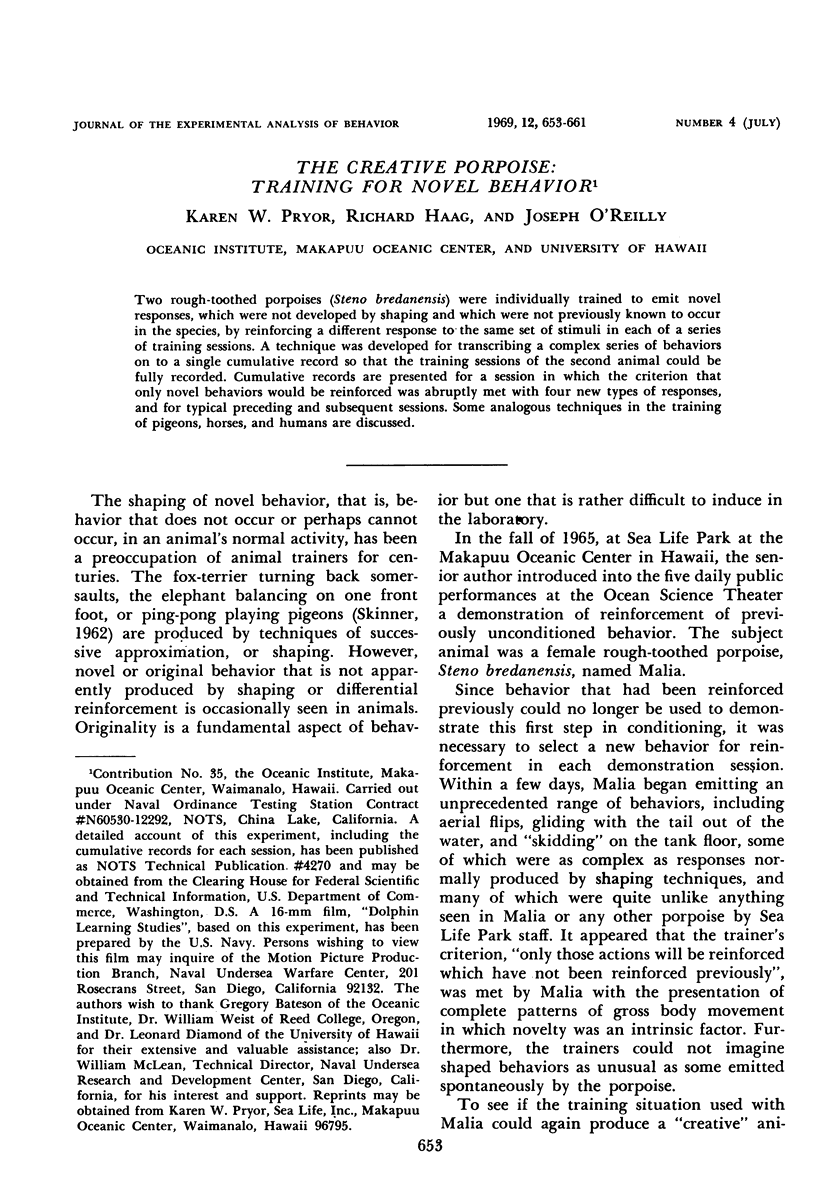

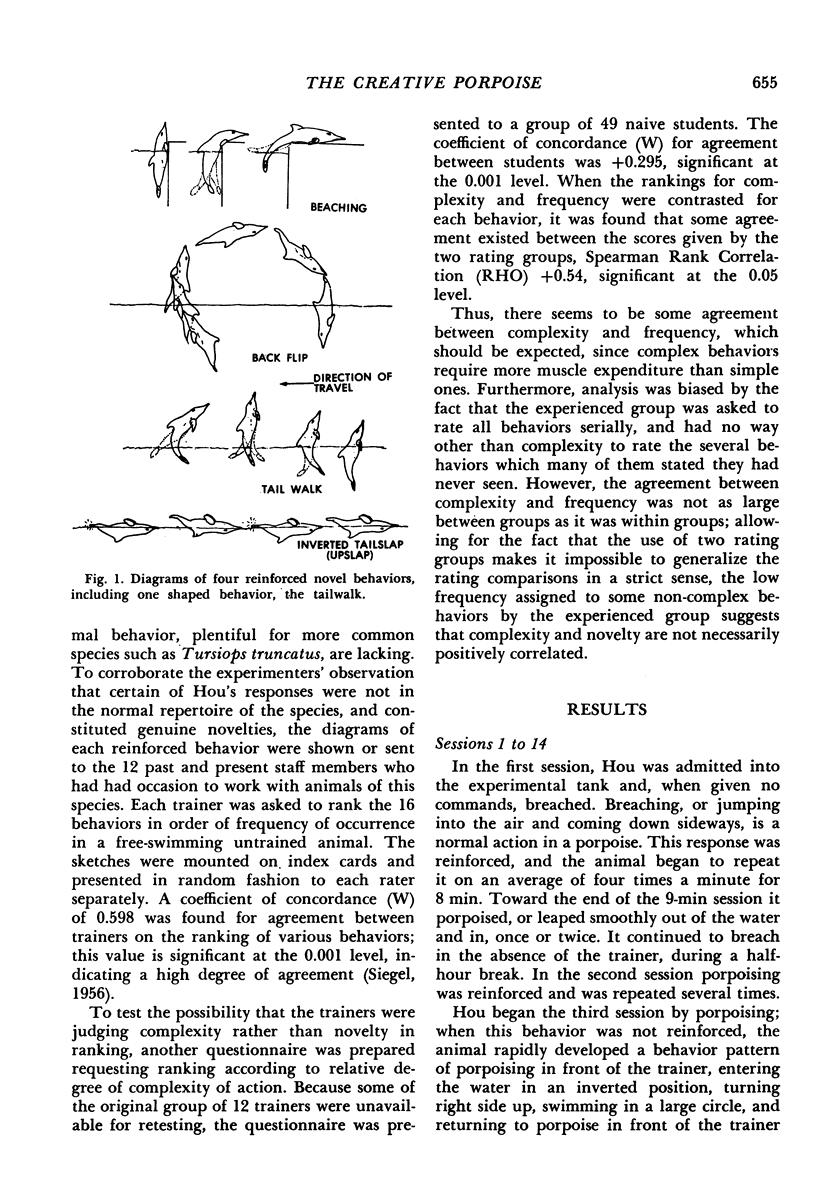

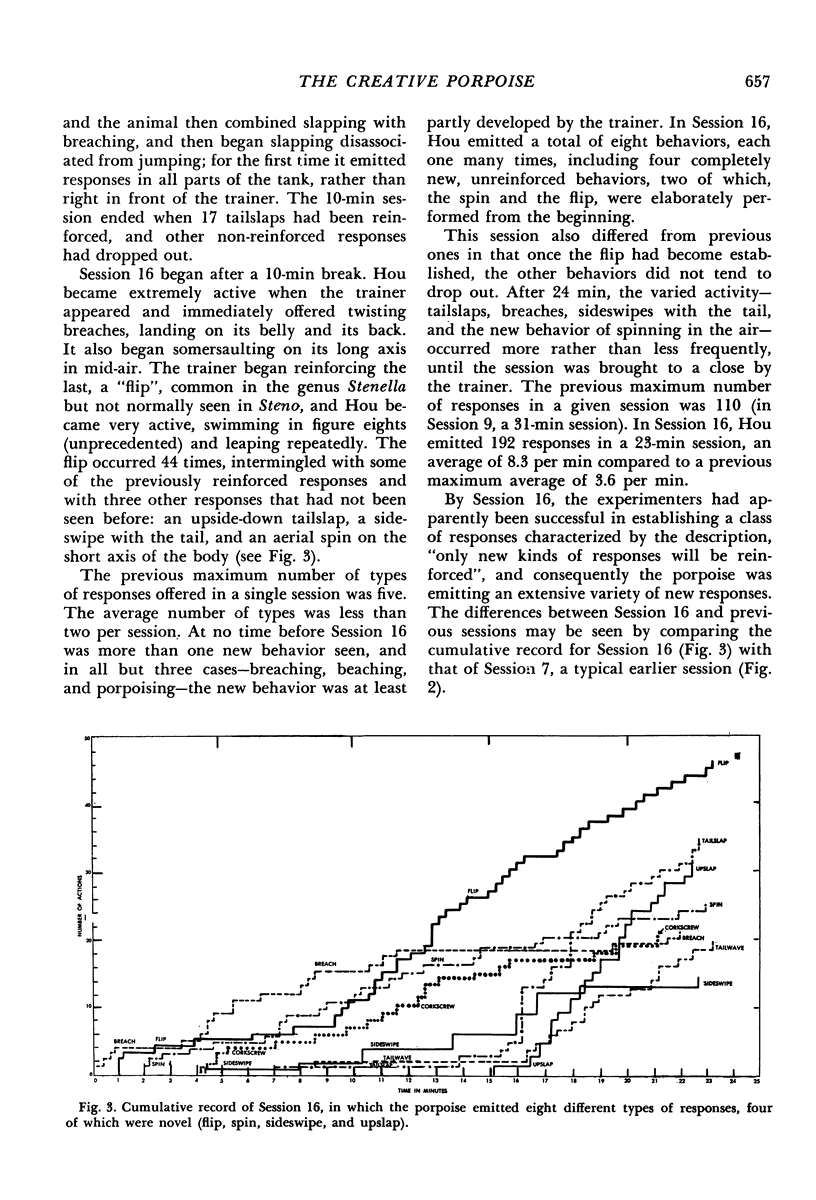
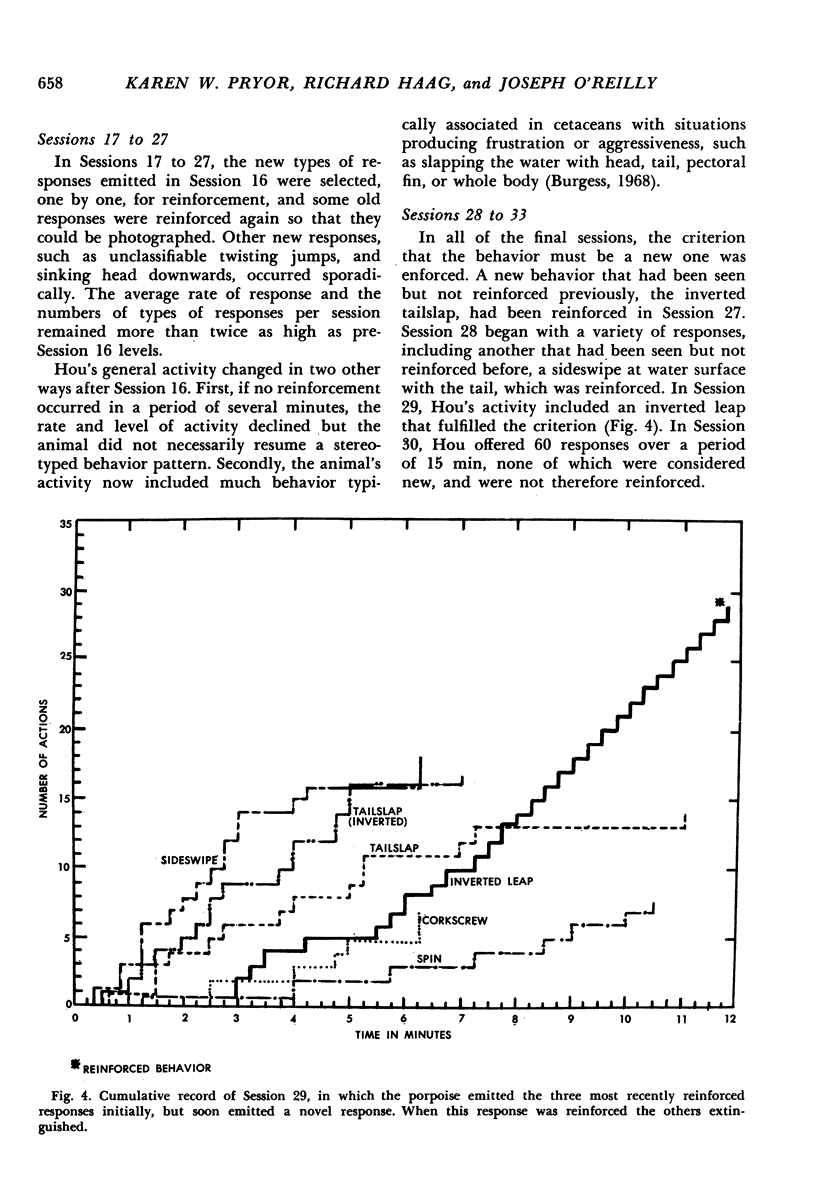

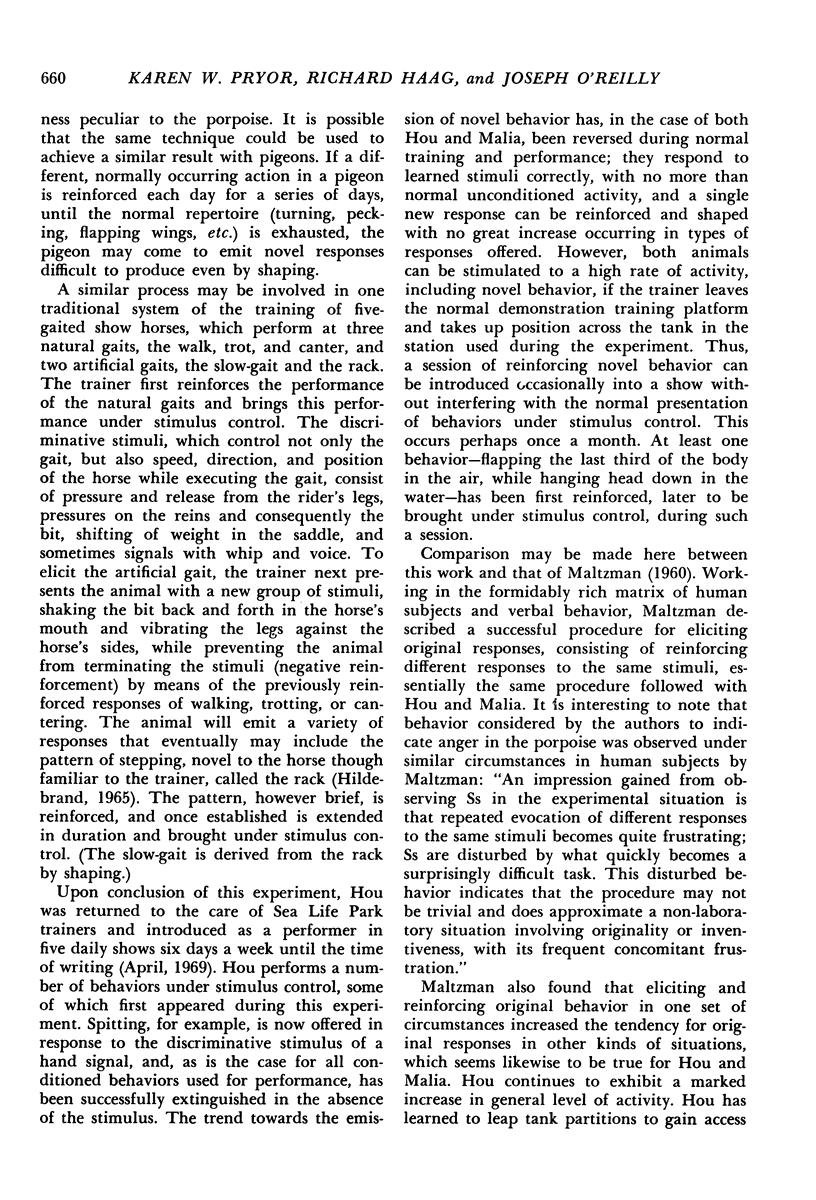
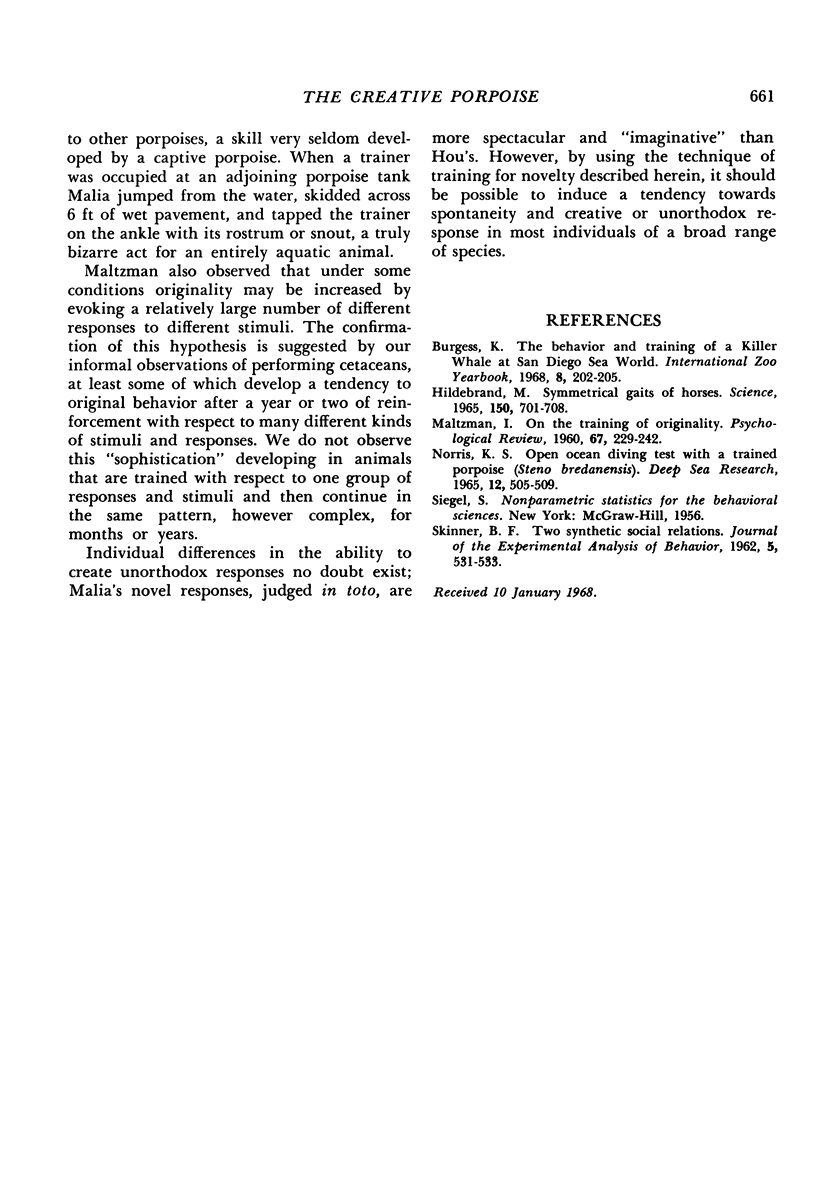
Selected References
These references are in PubMed. This may not be the complete list of references from this article.
- Hildebrand M. Symmetrical gaits of horses. Science. 1965 Nov 5;150(3697):701–708. doi: 10.1126/science.150.3697.701. [DOI] [PubMed] [Google Scholar]
- MALTZMAN I. On the training of originality. Psychol Rev. 1960 Jul;67:229–242. doi: 10.1037/h0046364. [DOI] [PubMed] [Google Scholar]
- SKINNER B. Two 'synthetic social relations'. J Exp Anal Behav. 1962 Oct;5:531–533. doi: 10.1901/jeab.1962.5-531. [DOI] [PMC free article] [PubMed] [Google Scholar]


